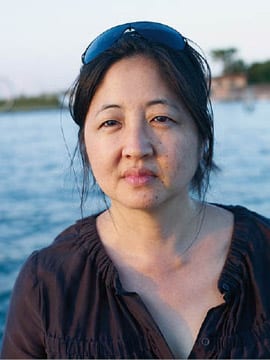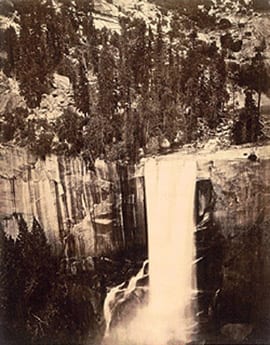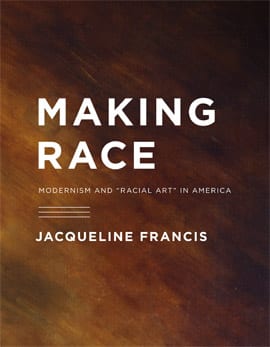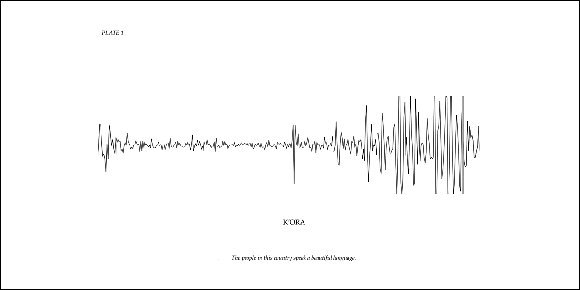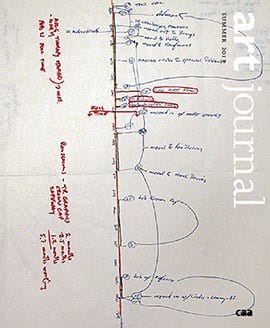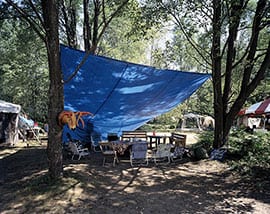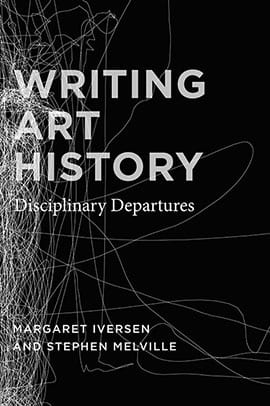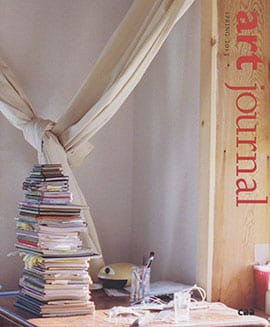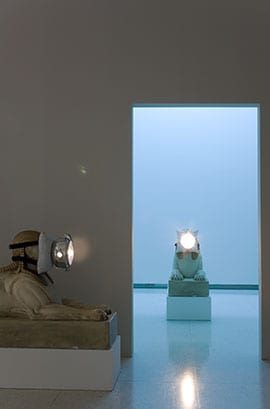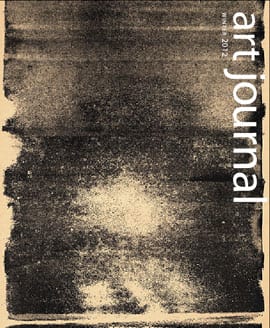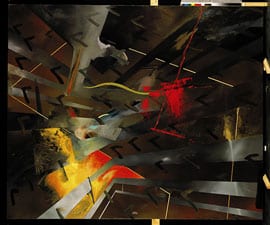Well before I met Karin Higa, I knew of her as a curator of Asian American art, a prominent voice in the contemporary art world, and an author whose writings I frequently assigned to students.
Category: From Art Journal
“A Clear Day and No Memories”: Neurology, Philosophy, and Analogy in Kerry Tribe’s H.M.
By Matthew Goulish
In order to begin I must tell a horror story. I will try to mitigate the horror, through accuracy of telling, through facts, and through a degree of humility before them. Yet I will acknowledge it. I mean I already have. Horror is not fact.
Modernism, Essentialism, and “Racial Art” in America
By Amy Lyford
It is exciting to read two books that demonstrate the power, impact, and necessity of art history’s engagement with critical race studies—especially in the context of scholarship on modernist American art.
The Voice as Uncanny Index in Susan Hiller’s The Last Silent Movie
In the darkened projection room, the viewer hears twenty-five voices in succession speaking short passages in extinct or endangered languages. Susan Hiller collected the recordings for her twenty-one-minute audiovisual work The Last Silent Movie from a variety of archival sources.
Introduction: Conversations on Queer Affect and Queer Archives
By Tirza True Latimer
More than a repository of objects or texts, the archive is the very process of selecting, ordering, and preserving the past—in short, of making history. Artists, scholars, and activists have been rethinking the politics of what archives preserve, demonstrating that the piecing together of cultural memory is not a neutral pursuit.
Sharing an Archive of Feelings: A Conversation
By Tammy Rae Carland and Ann Cvetkovich
As I remember, we met in 1995 in Portland, Oregon, through our musician girlfriends. I had just finished graduate school and had gone to New York, to the Whitney Independent Study Program, and I was about to be deployed, which is the way I think about it, to my first teaching job in the middle of Indiana.
Where Do We Come From? What Are We? Where Are We Going?
By Sarah Betzer
Spurred by global economic contractions, by the attention of politicians, legislators, and pundits, and certainly also by the historical curiosity and critical orientation of its ranks, the academy at present is in the thrall of self-scrutiny. What is the past, present, and future of the research university, an invention of stunningly recent vintage and yet of remarkable structural resilience?
Editor’s note
By Lane Relyea
If It Need Be Termed Surrender: Trisha Donnelly’s Subjunctive Case
By Michael Jay McClure
Allow for a problem within contemporary art, a problem concerning emptiness. After experiencing and writing on installations that, say, immersed me in cave systems, faux-hospitals, or forests, after navigating landscapes of fur or video labyrinths, I found myself, often, elsewhere. A group of contemporary installations seemed overwhelmingly spare, a few small objects, and I began to wonder what such a shift of spatial tenancy meant.
Precarious Symbolism: When the Political Sphere Overshadows Art History
By Maymanah Farha
As the methodical beat of a handheld drum begins to pound, a bearded, turbaned figure is shown lying on a bare floor. Overcome by emotional agony, he moves as though waking from a trance. A mane of dark hair frames his painted face as the camera zooms in and his melodic eulogy to lost love commences.
Shaping the Glass
By Katy Siegel
Life is not an idea, but ideas are part of life. Thinking is the only way out of our enmities and miseries. Vision—seeing better and more freshly, with less habit and personal bias—awakens us to life.
Richter’s Willkür
By Christine Mehring
Following on the heels of his signature photorealist blurs, Gerhard Richter’s abstract paintings have long exemplified a “permanent break in style as principle of style,” as Klaus Honnef noted in the artist’s first retrospective catalogue in 1969.

